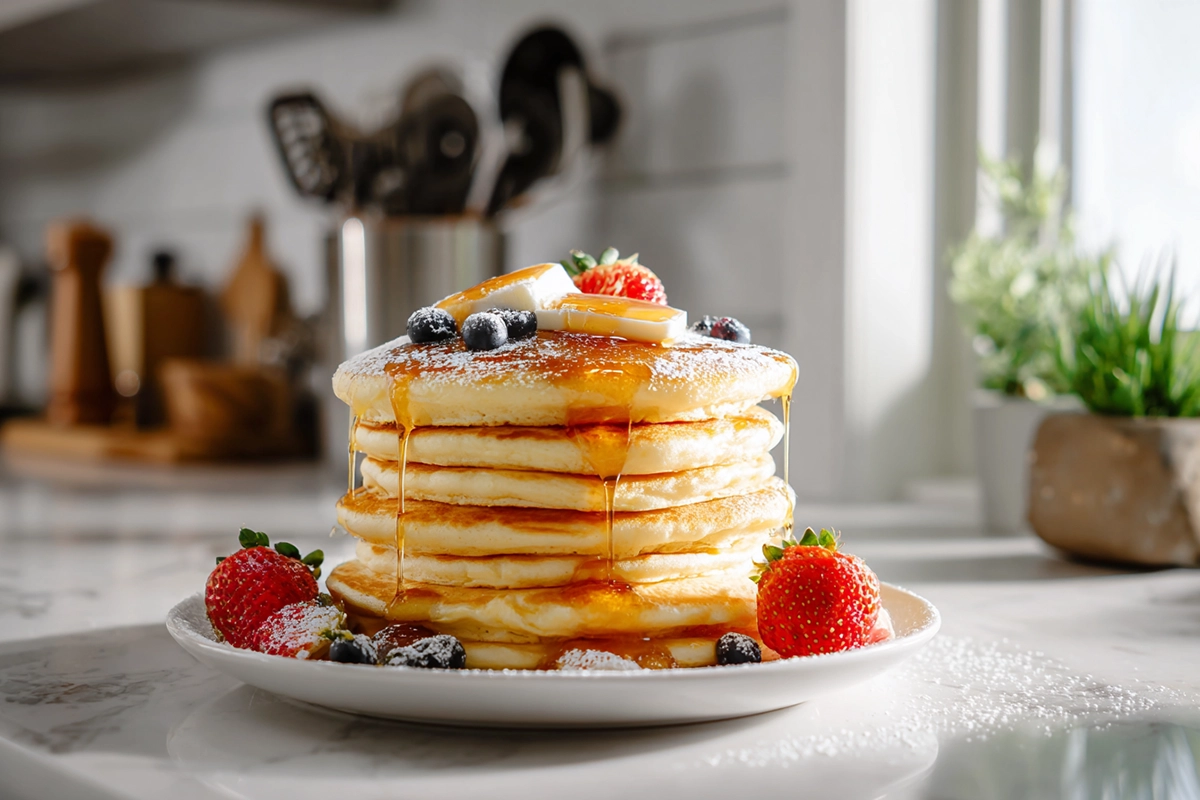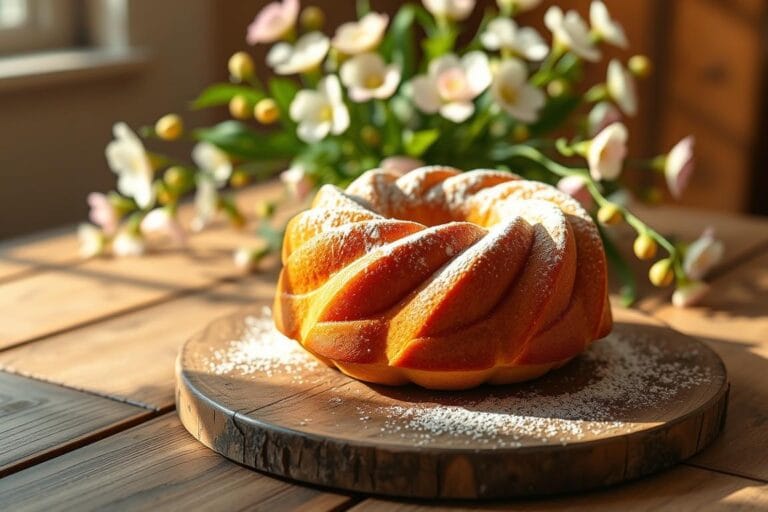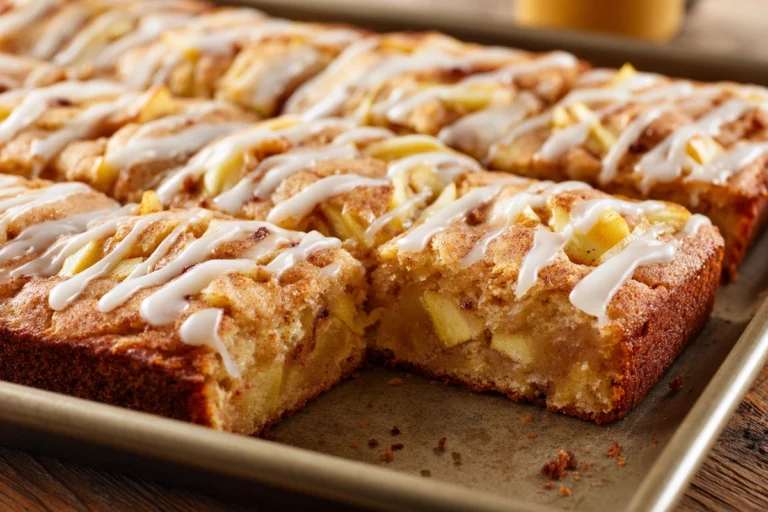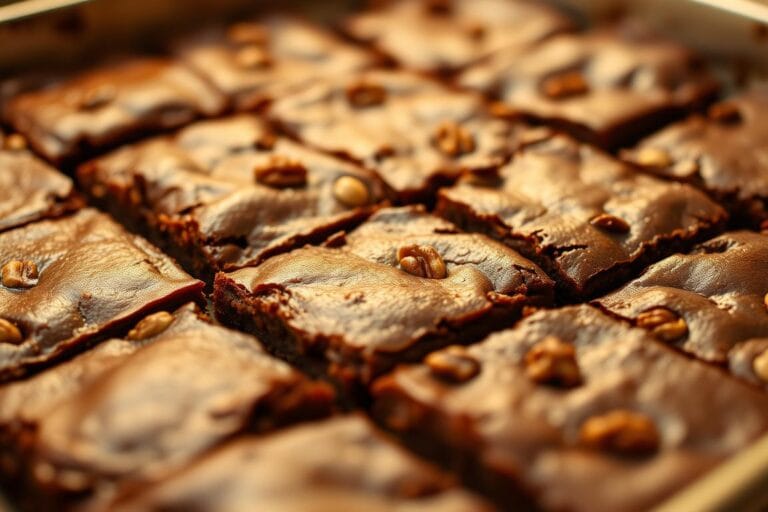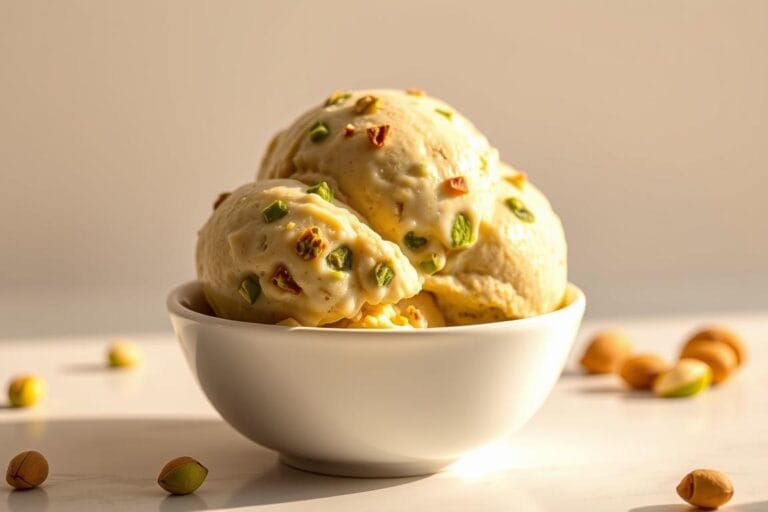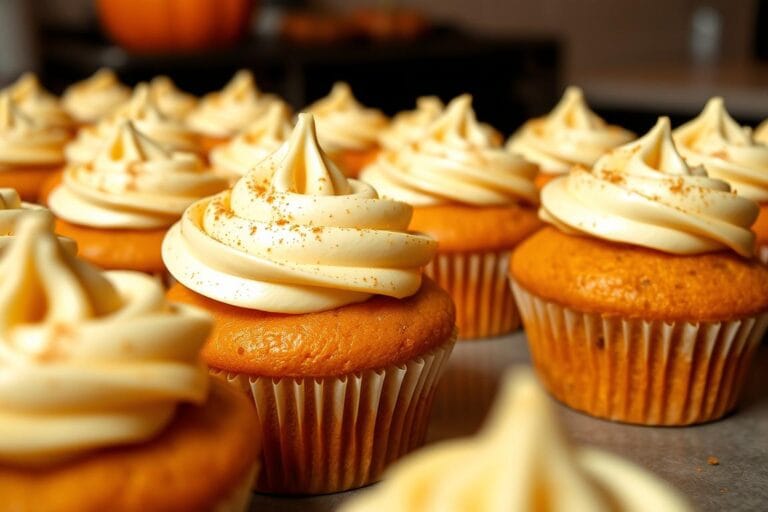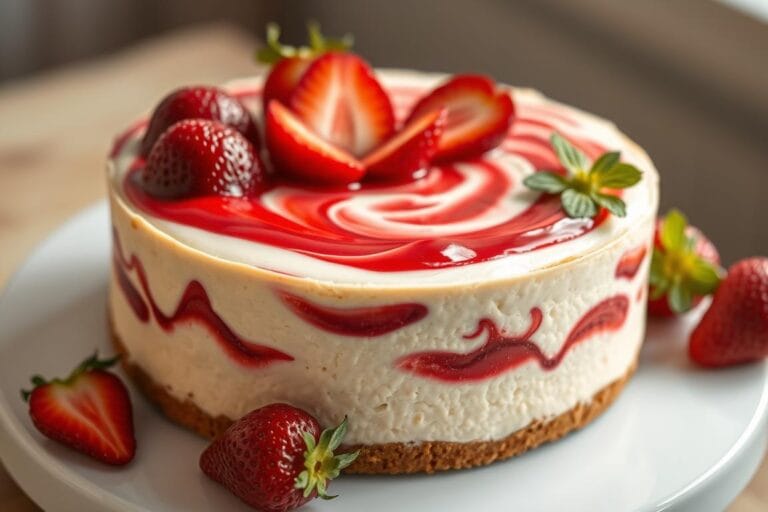Fluffy Japanese Pancakes: How to Make the Jiggly Soufflé Pancakes Everyone’s Talking About
If you’ve ever scrolled through social media and stopped mid-scroll to watch those tall, wobbly pancakes bounce under a drizzle of syrup, you already know the charm of Japanese pancakes. They’re not your average breakfast stack — they’re soft, cloud-like, and almost too pretty to eat. The first time I made them, I remember hovering over the pan like a nervous scientist, whispering, “Please rise.” When they finally puffed up, it felt like a small kitchen victory. Once you master this recipe, you’ll understand why these dreamy pancakes have taken over brunch menus across America.
What Are Japanese Pancakes?
At first glance, Japanese pancakes look like something out of a fairy tale — thick, golden, and delightfully jiggly. Unlike the traditional American buttermilk version, these pancakes are a soufflé-style creation, made by folding whipped egg whites into a rich batter. This simple technique transforms a basic breakfast dish into a melt-in-your-mouth experience that’s airy inside yet golden brown on the outside.
The trend started in Japan’s café scene, where chefs treated pancakes more like a dessert than a morning meal. They’re cooked slowly over low heat, often inside round molds to achieve that perfect height. The result? A breakfast that feels like biting into a cloud — warm, fluffy, and slightly sweet.
If you’ve ever had Japanese desserts like castella cake or mochi pancakes, you’ll notice they share the same emphasis on lightness and texture. But soufflé pancakes take it to the next level with that signature jiggle and soft bounce that makes them irresistible.
Print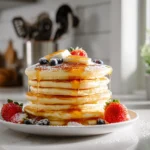
Fluffy Japanese Pancakes
- Total Time: 27 minutes
- Yield: 2 servings 1x
- Diet: Vegetarian
Description
Fluffy Japanese pancakes are soufflé-style pancakes that are soft, jiggly, and melt-in-your-mouth. Made with whipped egg whites and cooked slowly over low heat, they’re the perfect brunch treat that combines light texture, subtle sweetness, and café-style elegance.
Ingredients
2 large eggs, separated
2 tablespoons (25 g) sugar
2 tablespoons (30 ml) milk
¼ cup (30 g) all-purpose flour
½ teaspoon baking powder
½ teaspoon vanilla extract
⅛ teaspoon cream of tartar or lemon juice
1 tablespoon vegetable oil or butter (for cooking)
1 teaspoon water (optional, for steaming)
Instructions
Separate the eggs and let them come to room temperature.
In a bowl, whisk egg yolks, milk, and vanilla until smooth.
Sift in flour and baking powder, mixing until lump-free.
In another bowl, beat egg whites until foamy. Add cream of tartar, then slowly add sugar until stiff, glossy peaks form.
Gently fold one-third of the meringue into the yolk mixture, then fold in the rest in two batches until combined.
Preheat a nonstick pan on low heat and lightly grease it.
Spoon batter into ring molds or form tall mounds directly on the pan.
Add a teaspoon of water to the pan, cover, and cook for 5–6 minutes.
Flip carefully, cover again, and cook another 5 minutes until golden and set.
Serve warm with butter, syrup, and fresh fruit.
Notes
Use cake flour instead of all-purpose for an even lighter texture.
Whip egg whites to stiff peaks for the best rise.
Avoid opening the lid too soon while cooking—steam helps them rise.
Serve immediately for the fluffiest texture; they deflate over time.
- Prep Time: 15 minutes
- Cook Time: 12 minutes
- Category: Breakfast, Brunch
- Method: Stovetop
- Cuisine: Japanese
Nutrition
- Serving Size: 2 pancakes
- Calories: 230 kcal
- Sugar: 11 g
- Sodium: 95 mg
- Fat: 10 g
- Saturated Fat: 3 g
- Unsaturated Fat: 6 g
- Trans Fat: 0 g
- Carbohydrates: 27 g
- Fiber: 1 g
- Protein: 7 g
- Cholesterol: 125 mg
Ingredients You’ll Need (and Why They Matter)
Creating these pancakes isn’t difficult, but precision is key. Here’s everything you need for a perfect batch:
Ingredients
- 2 large eggs, separated
- 2 tablespoons (25 g) sugar
- 2 tablespoons (30 ml) milk
- ¼ cup (30 g) all-purpose flour
- ½ teaspoon baking powder
- ½ teaspoon vanilla extract
- ⅛ teaspoon cream of tartar or lemon juice (for stabilizing egg whites)
- 1 tablespoon vegetable oil or butter (for cooking)
- 1 teaspoon water (optional, to create steam)
Each ingredient plays a role in achieving that perfect lift. The whipped egg whites trap air, sugar adds stability and sweetness, and milk keeps the texture tender. If you have cake flour, you can use that instead of all-purpose for an even lighter crumb.
Pro Tip: Always separate your eggs while cold, then let them come to room temperature before whipping — this helps your whites reach stiff peaks faster.
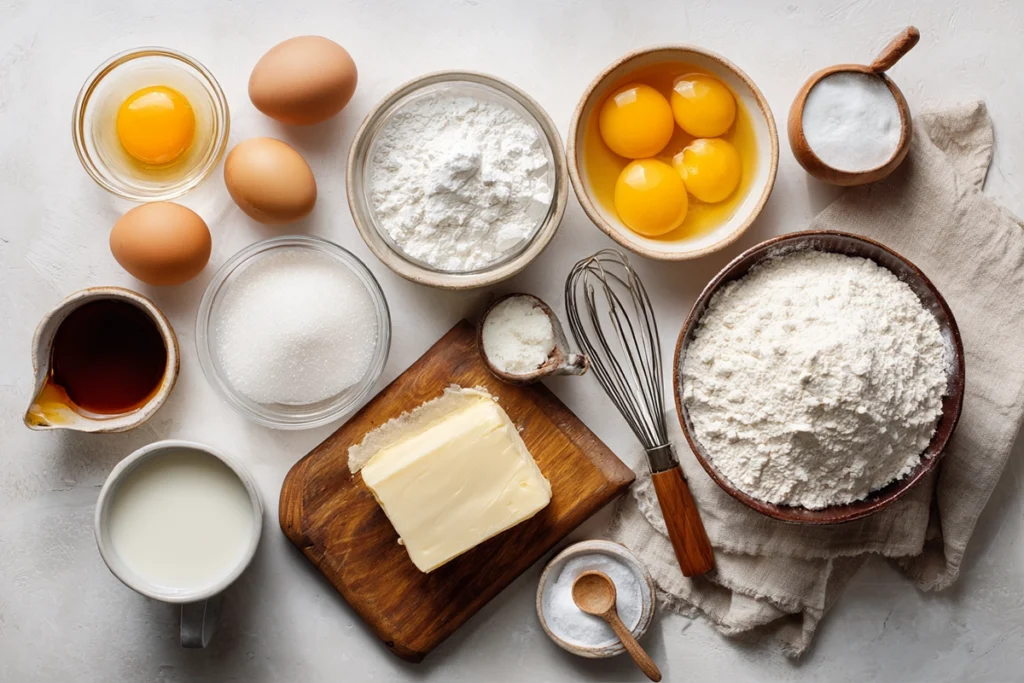
Step-by-Step: How to Master the Technique
Preparing the Batter
Start by whisking egg yolks, milk, and vanilla together until smooth. Sift in flour and baking powder, then gently mix until combined. The goal is a silky batter without lumps.
Whipping the Meringue
In a clean, grease-free bowl, beat egg whites until foamy. Add cream of tartar, then slowly pour in sugar while continuing to beat until stiff peaks form. When you lift the beaters, the meringue should stand tall and glossy — not droop.
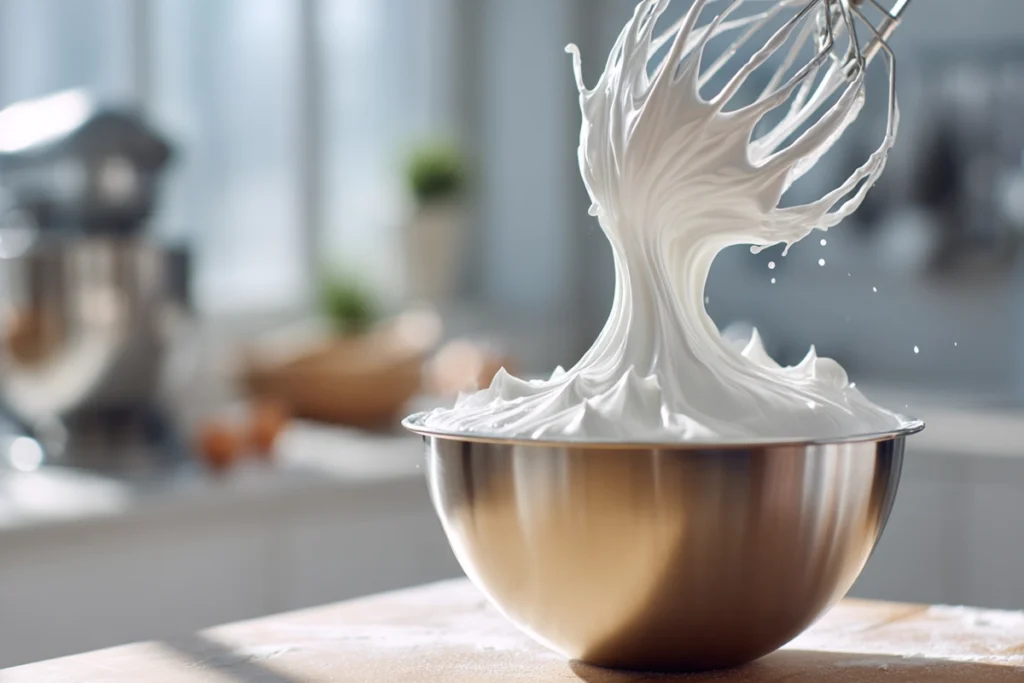
Folding and Cooking
Fold one-third of the meringue into the yolk mixture to loosen it, then gently fold in the rest in two batches. Use a rubber spatula, and take your time. Overmixing will deflate the air you worked so hard to build.
Preheat a nonstick pan on low heat and lightly grease it. If you have ring molds, set them in the pan and spoon the batter inside to help the pancakes rise evenly. Add a teaspoon of water to the pan, cover it with a lid, and let steam work its magic. Cook for about 5–6 minutes on each side, flipping carefully once golden.
When they’re done, they should be tall, golden, and slightly wobbly — that’s the hallmark of a perfect Japanese pancake.
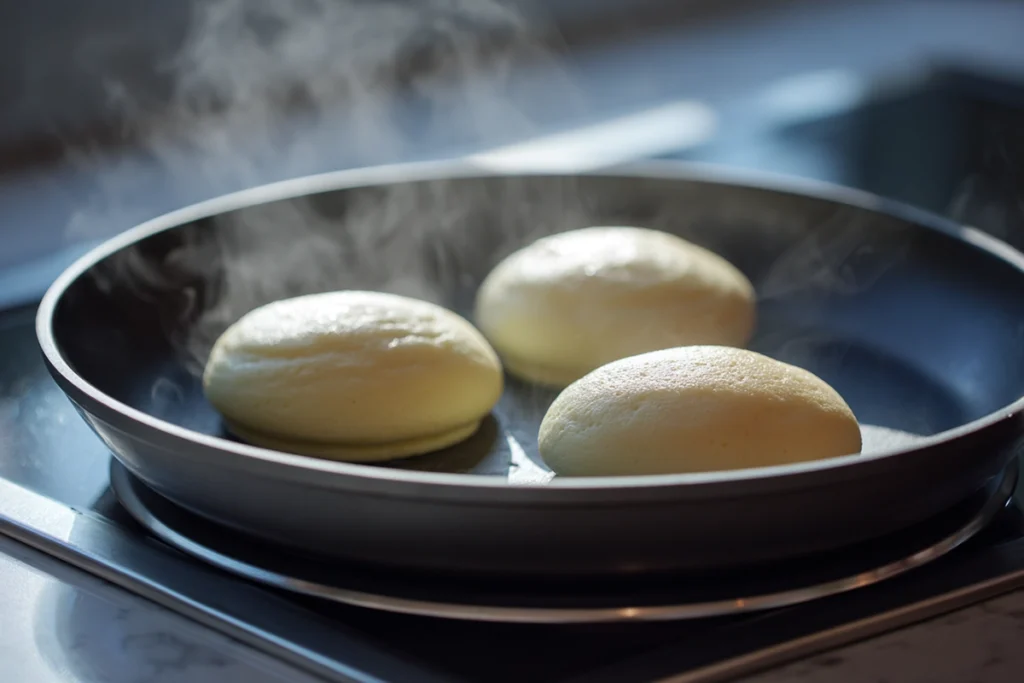
Serving and Toppings
The beauty of Japanese pancakes lies in their versatility. They’re delicate enough to pair with classic toppings like butter and maple syrup but elegant enough for café-style presentation.
Try dusting them with powdered sugar or topping with fresh berries and whipped cream. For a Japanese twist, drizzle with matcha sauce or top with a dollop of sweet red bean paste. If you’re feeling adventurous, caramelized banana slices or miso butter can give your pancakes a gourmet touch.
You can also serve them with a scoop of vanilla ice cream for a dessert-style brunch treat. And if you love aesthetics, stack them high, drizzle syrup in slow motion, and watch that beautiful bounce — it’s the stuff of social media dreams.
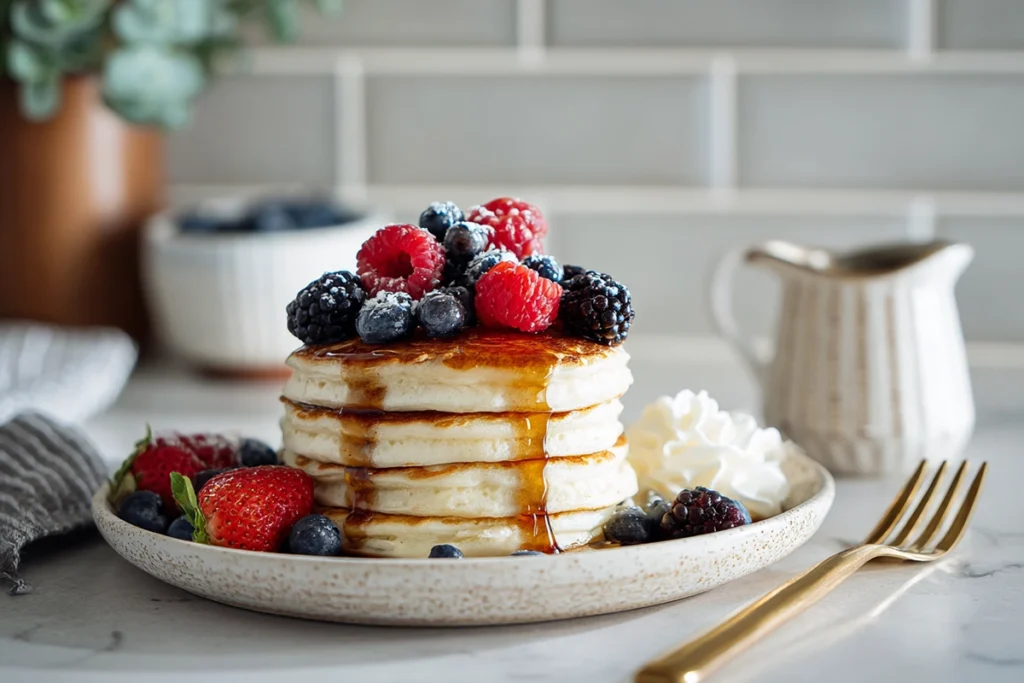
Dietary Variations and Substitutions
These pancakes are surprisingly adaptable, so you can enjoy them even if you’re following a specific diet.
Vegan: Replace eggs with aquafaba (the liquid from canned chickpeas) for the meringue and use oat milk instead of dairy. A touch of vinegar can help stabilize the whipped aquafaba.
Gluten-Free: Substitute the flour with a gluten-free all-purpose blend or rice flour. Just make sure your baking powder is certified gluten-free.
Low-Calorie: Reduce the sugar to one tablespoon and use nonfat milk or unsweetened almond milk. You can also use a calorie-free sweetener like erythritol.
Halal: Most ingredients are naturally halal, but check that your vanilla extract is alcohol-free or use vanilla powder as an alternative.
Lactose-Free: Substitute regular milk with almond, oat, or soy milk, and use coconut whipped cream for topping.
These small changes make it easy to customize without losing that signature fluffiness and flavor.
Storage and Reheating Tips
While these pancakes are best eaten fresh off the pan (trust me, nothing beats that warm, jiggly texture), you can store leftovers if needed. Let them cool completely, then place them in an airtight container and refrigerate for up to two days.
To reheat, don’t use the microwave — it’ll make them rubbery. Instead, warm them gently in a covered pan over low heat for about two minutes per side or use a quick steam to revive the softness. Avoid freezing, as the texture tends to collapse after thawing.
If you plan to prep ahead, make the batter right before cooking, not hours in advance. The whipped meringue loses volume quickly, so timing matters.
There’s something deeply satisfying about making Japanese pancakes from scratch — watching them rise slowly under the lid, smelling the sweet aroma, and finally sliding that golden stack onto your plate. Whether you serve them for brunch, dessert, or an indulgent breakfast-for-dinner moment, these soufflé pancakes turn any day into something special. Once you’ve tried them, it’s hard to go back to the regular kind.
FAQ
Why do my Japanese pancakes deflate after cooking?
They deflate when the meringue loses air. To prevent this, beat your egg whites to stiff peaks and fold them gently into the batter. Also, cook on low heat and avoid opening the lid too early — the steam helps them rise and stay fluffy.
Can I make Japanese pancakes without ring molds?
Yes, you can! Just drop the batter into tall mounds on a well-greased nonstick pan and shape it quickly with a spatula. Cover with a lid to trap steam so they still rise beautifully, even without molds.
How do I know when Japanese pancakes are cooked through?
They should be golden on both sides and spring back when lightly pressed in the center. If they still feel too jiggly or wet, cook a few extra minutes on low heat with the lid on.
Can I use all-purpose flour instead of cake flour?
Absolutely. All-purpose flour works fine; your Japanese pancakes will just be slightly denser. For a softer texture, reduce the flour by about one tablespoon or sift it twice before adding.
How do I reheat leftover Japanese pancakes?
The best way is to reheat them in a covered pan over very low heat or steam them for 30 seconds. Avoid microwaving — it tends to flatten the pancakes and ruin that signature soufflé texture.
What Are Our Readers Saying?
There are no reviews yet. Be the first one to write one.

